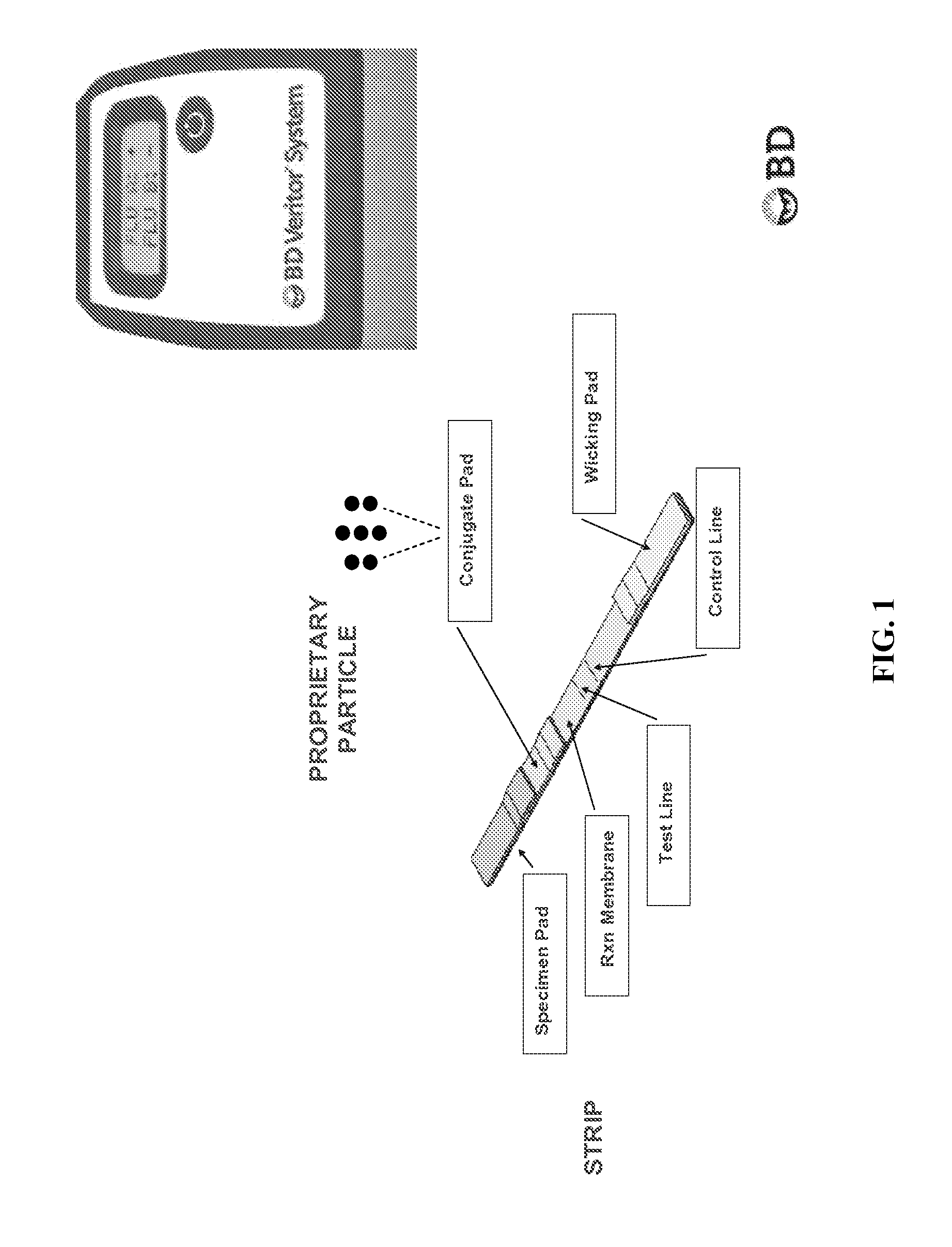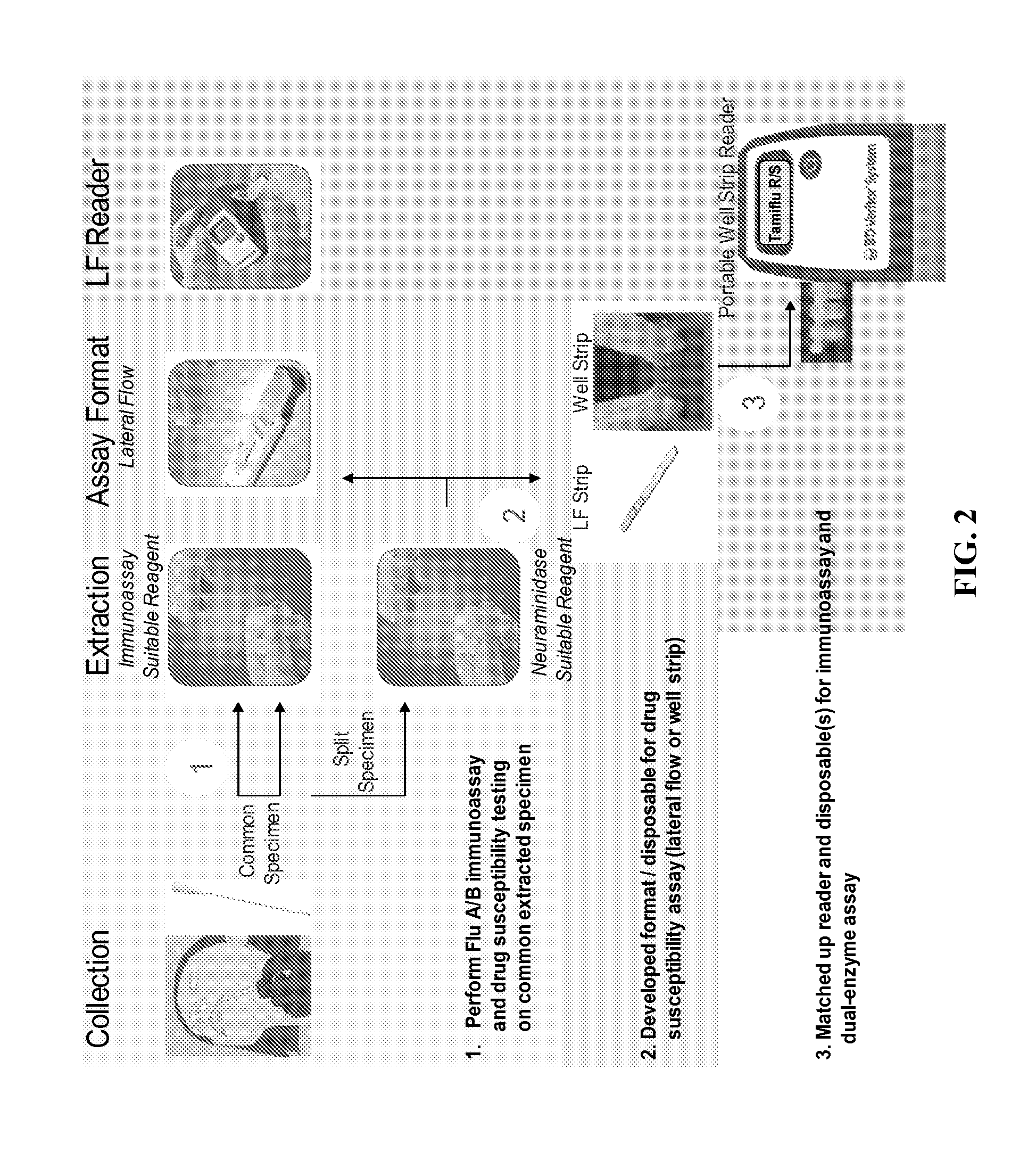Methods and kits for the diagnosis of influenza
a technology for influenza and kits, applied in the field of point-of-care influenza tests, can solve the problems of constant and serious threat to public health, and achieve the effect of inhibiting the activity of neuraminidas
- Summary
- Abstract
- Description
- Claims
- Application Information
AI Technical Summary
Benefits of technology
Problems solved by technology
Method used
Image
Examples
example 1
Combination Assay
[0155]This example illustrates an example workflow with an influenza type A or type B test, and a neuraminidase drug resistance test. A kit comprising: an applicator tube containing an immunoassay extraction buffer and a lid with an opening; a first test device comprising a lateral flow immunoassay to identify influenza type A or type B; and a second test device comprising a kinetic flow assay to determine neuraminidase drug resistance, is unwrapped from packaging and each component labeled with a patient's identification. A specimen is collected from a patient's nose using a swab. The swab is inserted into the extraction buffer and swirled against the inside wall three times. The swab is removed from the extraction buffer while squeezing the sides of the tube, and then discarded. The lid of the applicator tube is attached to the tube.
[0156]The applicator tube is inverted and three drops (˜85 μl) of the extraction buffer are squeezed through the lid and applied to t...
example 2
Sensitivity of Photomultiplier Tube Apparatus
[0160]This example demonstrates the sensitivity of a Hamamatsu TO-Can photomultiplier tube device and the ability to carry out the low dark noise reading in a portable handheld system. Relative light units (RLU) were measured for various concentrations of a positive chemiluminescent signal producing control reagent (Cell Titer Glo) using a Hamamatsu TO-Can photomultiplier tube device. Controls included a background control and a dark count control. The results are shown in FIG. 6.
example 3
[0161]This example demonstrates a dual enzyme assay for the test strain A / Mississippi / 03 / 2001 A(H1N1) H275Y which comprises a neuraminidase that is sensitive to Zanamivir and resistant to Oseltamivir. Specimen comprising the test strain was diluted 1 / 3000 or 1 / 9000 and applied to a kinetic flow test device. Test chambers in the kinetic flow test assay included those as in TABLE 5A, that is: (1) reaction mixture+specimen; (2) reaction mixture+specimen+test antiviral drug; (3) control: reaction mixture; and (4) control: reaction mixture+test antiviral drug. Signal from each test chamber was measured using a photomultiplier tube device. The results are shown in FIG. 7. The assay showed that the test strain was more sensitive to Zanamivir than Oseltamivir.
PUM
| Property | Measurement | Unit |
|---|---|---|
| Diameter | aaaaa | aaaaa |
| Diameter | aaaaa | aaaaa |
| Diameter | aaaaa | aaaaa |
Abstract
Description
Claims
Application Information
 Login to View More
Login to View More - R&D
- Intellectual Property
- Life Sciences
- Materials
- Tech Scout
- Unparalleled Data Quality
- Higher Quality Content
- 60% Fewer Hallucinations
Browse by: Latest US Patents, China's latest patents, Technical Efficacy Thesaurus, Application Domain, Technology Topic, Popular Technical Reports.
© 2025 PatSnap. All rights reserved.Legal|Privacy policy|Modern Slavery Act Transparency Statement|Sitemap|About US| Contact US: help@patsnap.com



